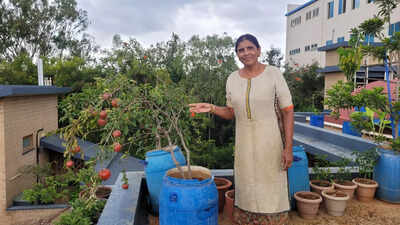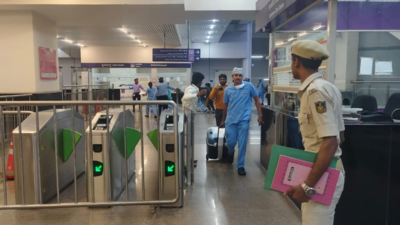‘To be seen is to survive’: Bengaluru techies ditch WFH, brave traffic instead | Bengaluru News

BENGALURU: As fears of AI-driven layoffs grip the tech industry, a new pattern has emerged on the city’s already clogged Outer Ring Road (ORR): Wednesday is now the worst day to commute. In what officials call a clear shift in behaviour, the Bengaluru Traffic Police (BTP) say vehicle entries into 26 tech parks on ORR spiked by 20-45% this June compared to the same period last year. And Wednesday stands out — with 1.2 lakh vehicles logged, up from 82,168 in June 2024. The rising midweek rush, say police, appears to stem from a growing belief among tech workers that being visible in office improves job security amid a wave of AI-triggered downsizing. “I can’t afford to be invisible,” said Rahul Shetty (name changed), a senior developer who now shows up at his Doddanekundi office at least four days a week. “These days, optics matter. Being seen at your desk might ensure job security.” The trend is fuelling severe congestion along tech corridors like ORR (Silk Board to KR Pura), Sarjapur Road, and roads leading to Electronics City. Sensing a growing crisis, newly-appointed joint commissioner (traffic) Karthik Reddy has suggested a midweek work-from-home policy for tech companies to curb the surge. “Peak traffic is observed between 9am and 10am on all weekdays, but Wednesday stands out because of increased office attendance by IT employees. We’ve recommended that tech firms either allow work-from-home every Wednesday or shift office timings to start by 7.30am and end earlier in the day,” Reddy told TOI. But the traffic chaos has reignited frustration about the city’s inadequate infrastructure — something commuters say needs urgent fixing, beyond temporary work-from-home measures. “Work-from-home for a single day is only a temporary band-aid,” said Suma Santosh, a data analyst who works in Bellandur. “The deeper problem lies in poor pedestrian infrastructure. I live barely 2.5km from my office, but I’m forced to take my two-wheeler because walking is unsafe and inconvenient. If proper footpaths and crossings existed, at least 25% of two-wheeler traffic could be cut down.” Others point to the lack of coordination among civic agencies. “From Metro construction to BWSSB’s pipeline works to road widening, everything is happening at the same time,” said Vikram Naik, a project lead in Marathahalli. “There’s no synchronisation between agencies. This chaos is what’s fuelling peak-hour gridlocks.” A BBMP official who was part of the recent coordination meeting acknowledged that concurrent infrastructure works have worsened the situation. “We’re working with BMRCL and BWSSB to ensure better coordination in project planning. We’re also exploring the feasibility of creating parallel service roads or alternative routes to divert traffic.” Some companies are willing to explore flexible options, but stress the need for careful rollout. “Work-from-home arrangement on Wednesdays is doable but optional,” said Sridhar M, an HR executive at a major tech firm. “Some roles demand physical presence. We’re open to encouraging early shift starts, and promoting carpooling and BMTC usage among our employees.” As bottlenecks intensify across Bellandur, Marathahalli, Kadubeesanahalli and Devarabisanahalli, the coming weeks could prove crucial in determining whether better coordination and corporate cooperation can untangle the city’s tech traffic mess.





